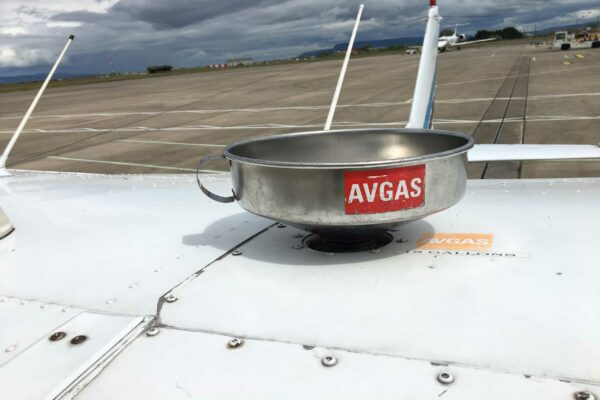A recent joint statement from the CAA and Department for Transport announced the intention to deliver a new Electronic Conspicuity (EC) specification for UK airspace. The statement is a result of work by the Surveillance Standards Task Force and was accompanied by a three-phase report into the subject, produced by the consultancy Egis. The report essentially maps the existing situation, gives a recommended option and identifies the future work required to make this a reality.
Now you may be wondering what is new about the statement – for years there have been projects and working groups that have considered issues around EC equipment. The CAA first published CAP 1391 – Electronic Conspicuity Devices in 2016, which essentially set the technical specification for EC devices used in General Aviation. Beyond that, the use of EC has developed organically.
The key message from the report is that we will be moving from an environment in which an EC device is primarily for collision avoidance in uncontrolled airspace, to one in which it is also providing surveillance data to air traffic control and providers of flight information services. This shift will be a key enabler of the UK’s Airspace Modernisation Strategy and require a new EC standard to be developed, referred to in the reports as ‘Enhanced EC’.
The preferred option
Phase 1 identified 15 individual options on frequency use and equipage requirements. The recommended option was ‘3A’ – use existing global standards, operating on 1090 MHz for piloted aircraft and 978 MHz for unpiloted aircraft (UAS). Uptake would be voluntary where possible, and mandatory carriage only where necessary.
It is not clear exactly what this will mean in practice, but there are clearly going to be more areas of airspace in which equipage with EC is either mandatory or confers some operational benefit. While we now know the frequencies this equipment will operate on, a more defined technical standard will need to be developed that ensures consistent data exchange and compatibility with surveillance equipment on the ground.
Key considerations
A key question is what standards Enhanced EC will require over and above that for existing equipment. The report identifies several issues for consideration such as installation standards and the use of uncertified GNSS position data.
Although we do not know exactly what the requirements will be, the good news is that the report suggests existing certified EC equipment that works on 1090 MHz will be acceptable, such as certified ADS-B transmitters and Mode-S ES transponders. Existing CAP 1391 compliant devices such as SkyEcho are a more open question, since the formal performance and integrity requirements may need to be higher than those currently applied, even if the equipment may be theoretically capable.
For GA operations, obvious questions are what to do about aircraft without onboard power and whether Enhanced EC could be used by aircraft not subject to airworthiness certification, such as single seat microlights or paramotors. For portable equipment a question would be whether they would be able to meet the performance requirements without a fixed external antenna.
Phase 3 concludes with a statement that ‘The minimum specification is a new category of CAP1391 device with assured data, guidance on output (antenna) to ensure reception, and system design assurance. Extending the CAP and retaining alignment with existing international standards minimises the effort required to upgrade existing product lines and provides certainty for ground infrastructure deployment. This ensures onward costs to airspace users are as low as possible whilst delivering performance needed to support the applications.’
How much will it cost?
It is hard to see equipment that would meet this new standard being any cheaper than existing EC solutions. The report suggests a target cost of £1,000 for a device compliant with Enhanced EC. It may be that subsidies can be applied, as was the case with 8.33 kHz radios and earlier generation EC devices.
The Phase 3 report mentions ‘the need for novel installation guidance, sensitive to the constraints of different airspace users, developed through activities are identified within the roadmap.’ It is issues such as these that will form part of future work. Exactly what path is taken will have a considerable impact on the cost and practicality of installation in GA aircraft. For example, installation certification could be made possible under an enhanced ‘Standard Change’ (CS-STAN) procedure, building on existing provisions.
I suspect the costs of equipage for airports and ANSPs may make the rollout of Enhanced EC airspace a gradual one. For airports the report mentions costs running well into six figures. New equipment in the ATC environment always brings a large price tag and plenty of expensive safety assurance activity to go with it.
Possible Benefits
The phase 3 report also discusses issues such as the development of surveillance-based Flight Information Services (FIS), Traffic Information Services-Broadcast (TIS-B) and Flight Information Services-Broadcast (FIS-B). As with the equipment in the aircraft, the issues are around the development of standards and cost.
The lack of consistent surveillance-based FIS in the UK has long been a frustration. A nationwide system based on the two EC frequencies would give increased traffic awareness for aircraft in receipt of FIS. TIS-B would also allow direct broadcast of traffic information to Enhanced EC equipped aircraft and FIS-B has the potential to provide aeronautical information in flight, as has been the case in the US for some years now.
A major driver is of course integration of UAS (drones). Communicating via EC is just one piece of the puzzle for UAS and manned aircraft to share the same airspace, but it is clearly an important one and the current situation of segregation is not ideal.
I suspect initially Enhanced EC will be relevant in areas such as transponder mandatory zones (TMZ), where it will replace or supplement traditional Mode S as the main access requirement. It may be that we see more ‘EC mandatory’ areas, such as those of more intensive aerial activity or used for UAS. Gradually as more ATC units update their receiver equipment, it will likely play more of a role in access to controlled airspace.
Slow Burn
Given how long it has taken to get to a position on frequency use, I doubt there is going to be any ‘big bang’ moment in this journey towards Enhanced EC. Expect 2023 to be a year of more workstreams and consultations, gradually making their way towards an updated standard. Even when that updated standard is established, I suspect the operational deployment will be gradual.
Clearly Enhanced EC will cost money for airspace users, airports and ANSPs. At least now there is a clearer direction and the CAA, manufacturers and airspace stakeholders can start working on the detail.








1 comment
Forgive me if this is stating the obvious, but, once again, we may be asked to re-equip with EC (again) that does little for GA, but is a massive benefit for commercial organisations, such as the drone industry and CAT, who’ll be able to fly in Class G airspace, rather than airways.
They will derive greater profit from this, but we are unlikely to gain much additional safety beyond what is currently available.
We’ve invested in 8.33Khz, Mode S and, lately, Skyecho or PAW as a result of CAA pressure; some have had to re-equip a second time, as early Mode S is no longer up to the job.
If we do need to re-equip, many of us will be reluctant to do so without a large measure of support